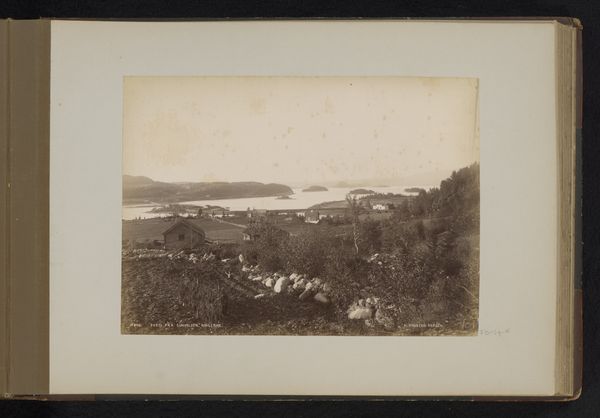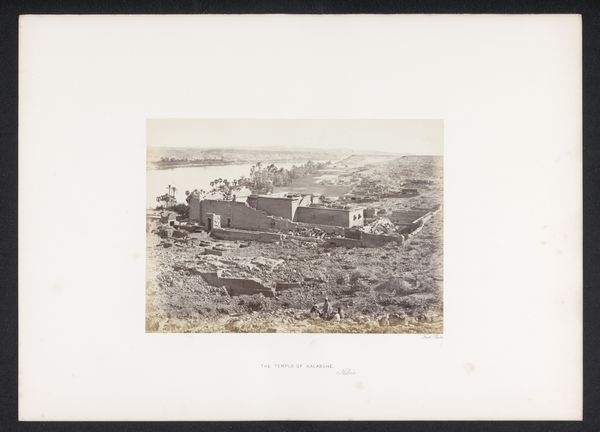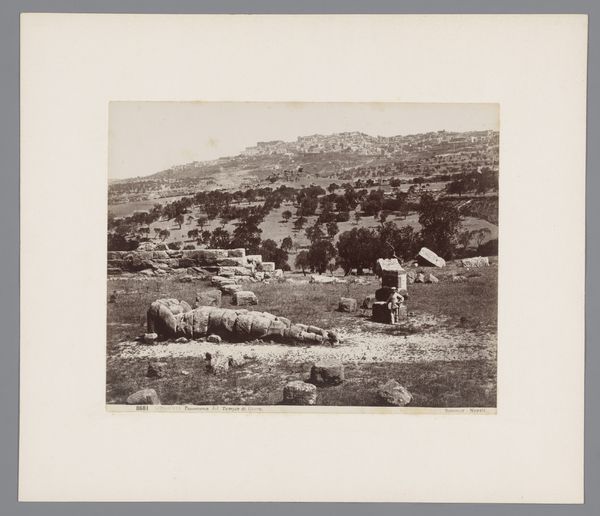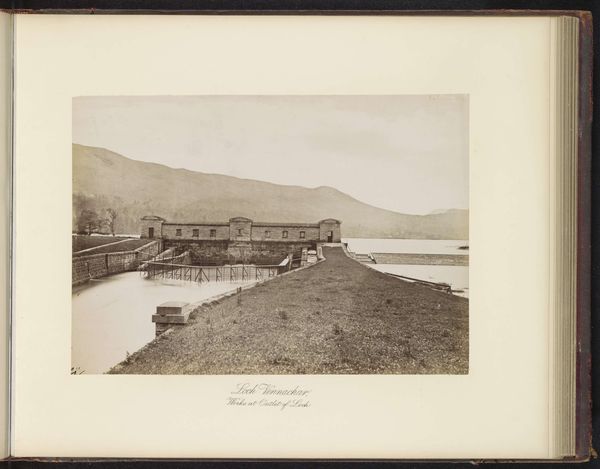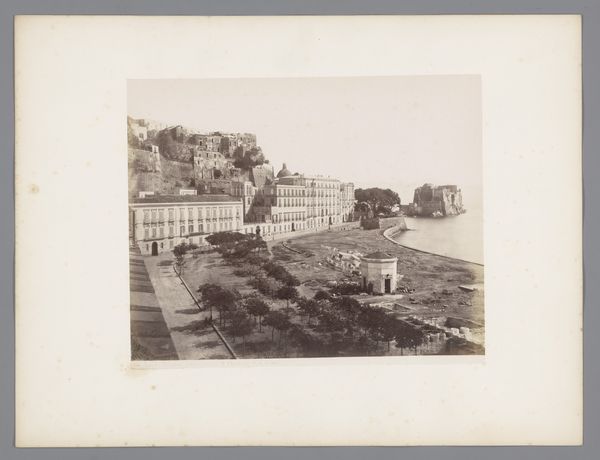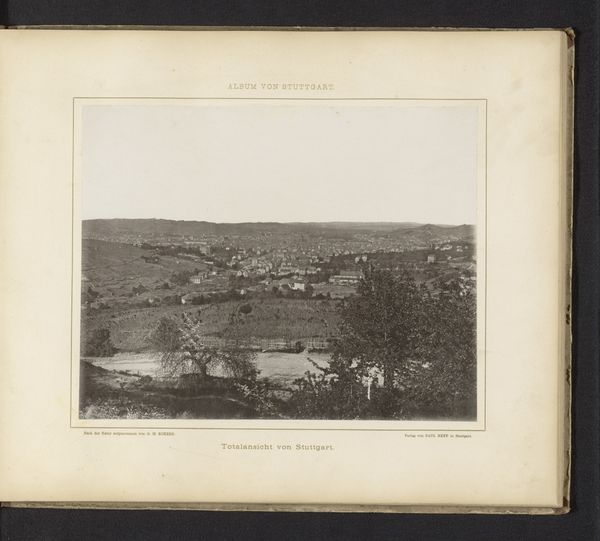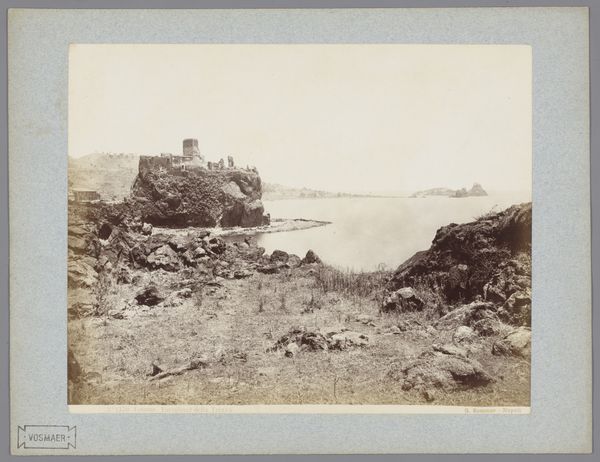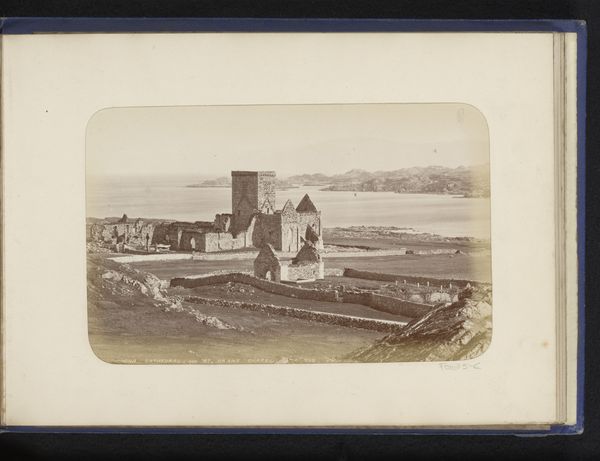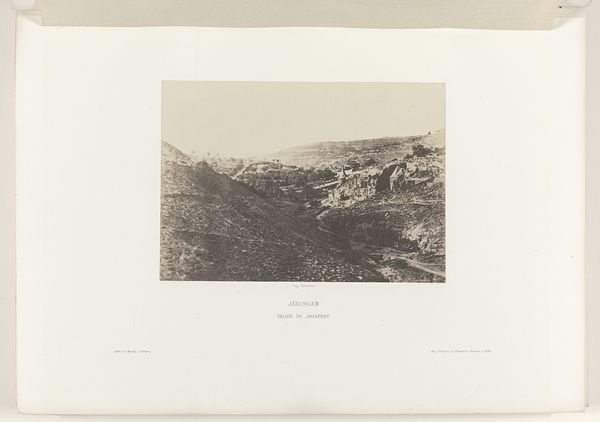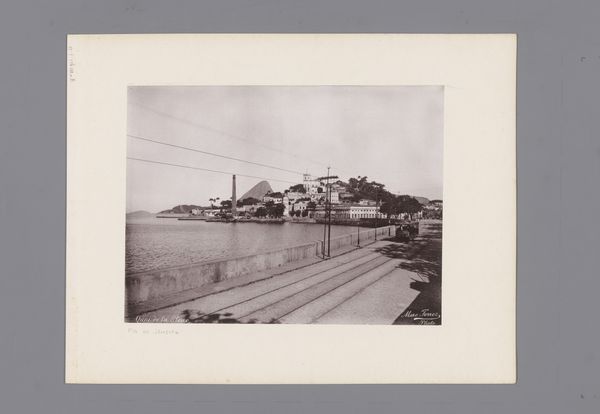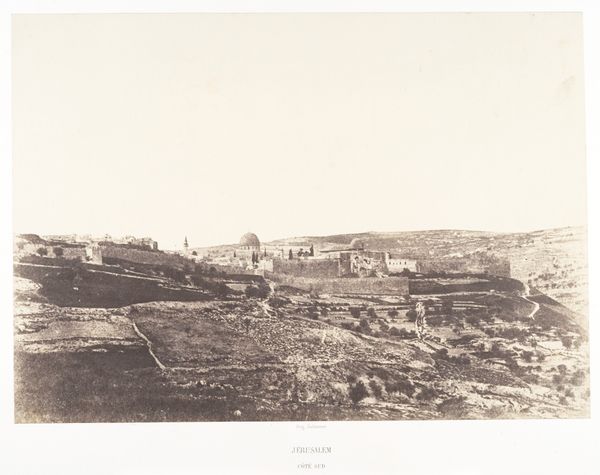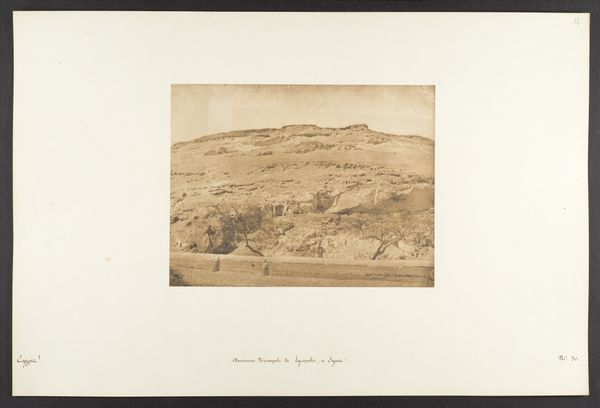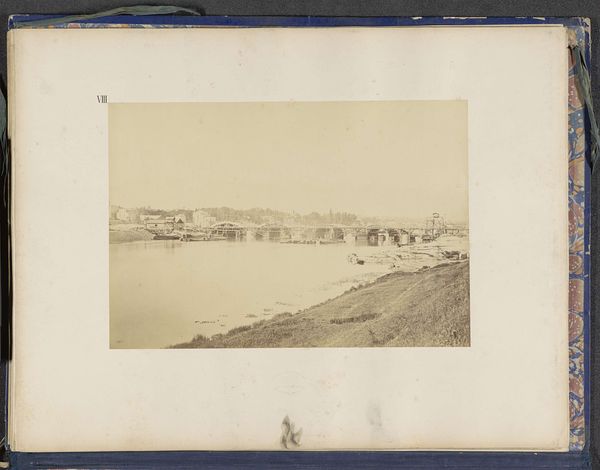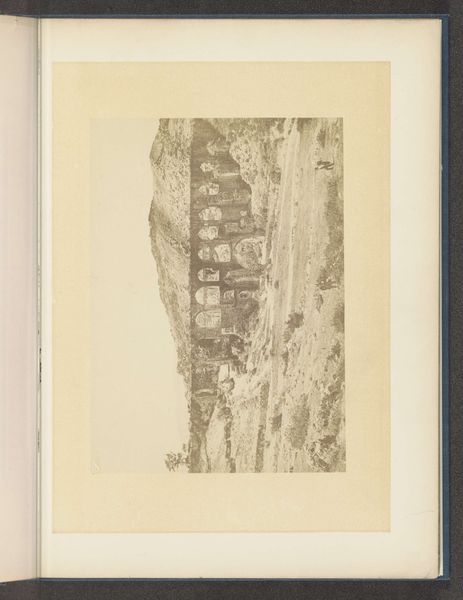
photography
#
lake
#
pictorialism
#
landscape
#
photography
#
cityscape
Dimensions: height 211 mm, width 271 mm
Copyright: Rijks Museum: Open Domain
This photograph of Clarens in Montreux, Switzerland, offers a fascinating insight into early photographic processes. The anonymous photographer, likely working in the late 19th century, employed a technique that would have been quite laborious. Each print of this period required careful preparation of a glass plate negative, coated with light-sensitive emulsion. The tones we see here, ranging from deep shadows to soft highlights, are the result of a delicate chemical dance, capturing the light reflecting off the Swiss landscape. Note how the terraced vineyards dominate the hillside. These represent not only agricultural industry, but also the intense labor required to cultivate grapes on such steep slopes. The image invites us to consider the lives of the people who toiled in these fields, and the social structures that shaped their existence. Looking closely at the photographic print itself, we see the marks of its making. The subtle imperfections, the tonal shifts – these remind us that photography, even in its early days, was as much a craft as it was a science. This image makes us appreciate the artistry involved, and challenges the divide between industry, labor and art.
Comments
No comments
Be the first to comment and join the conversation on the ultimate creative platform.
